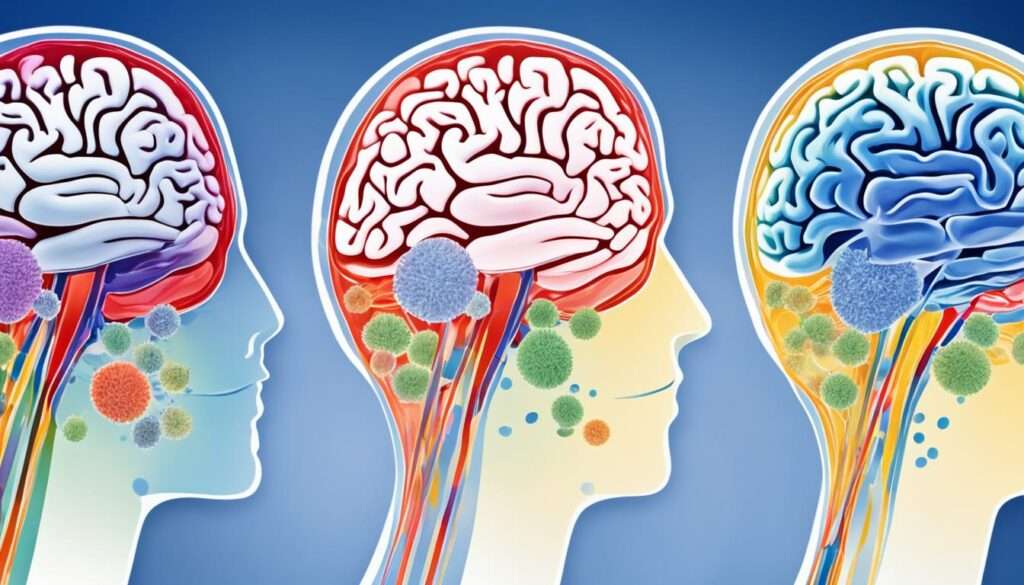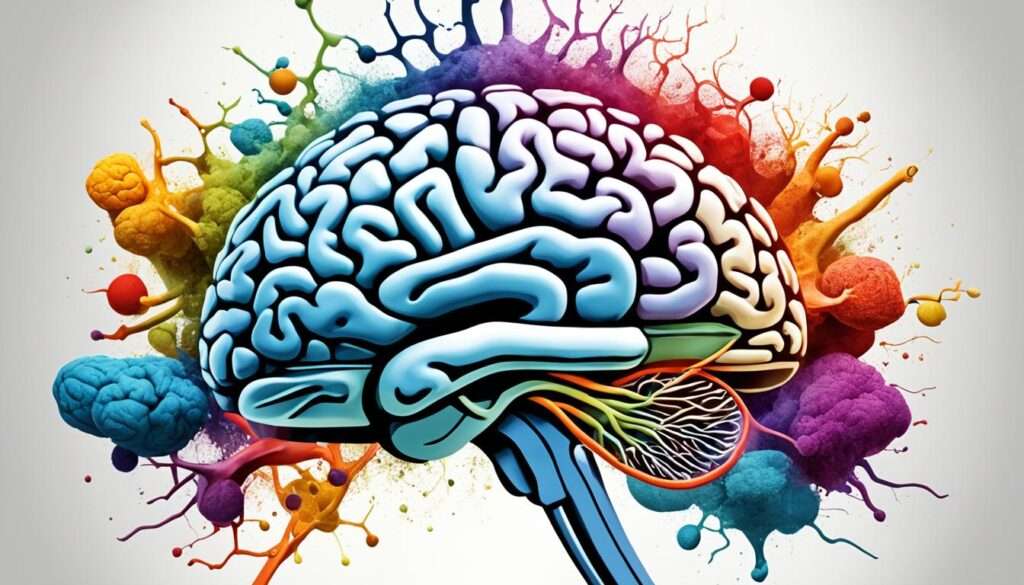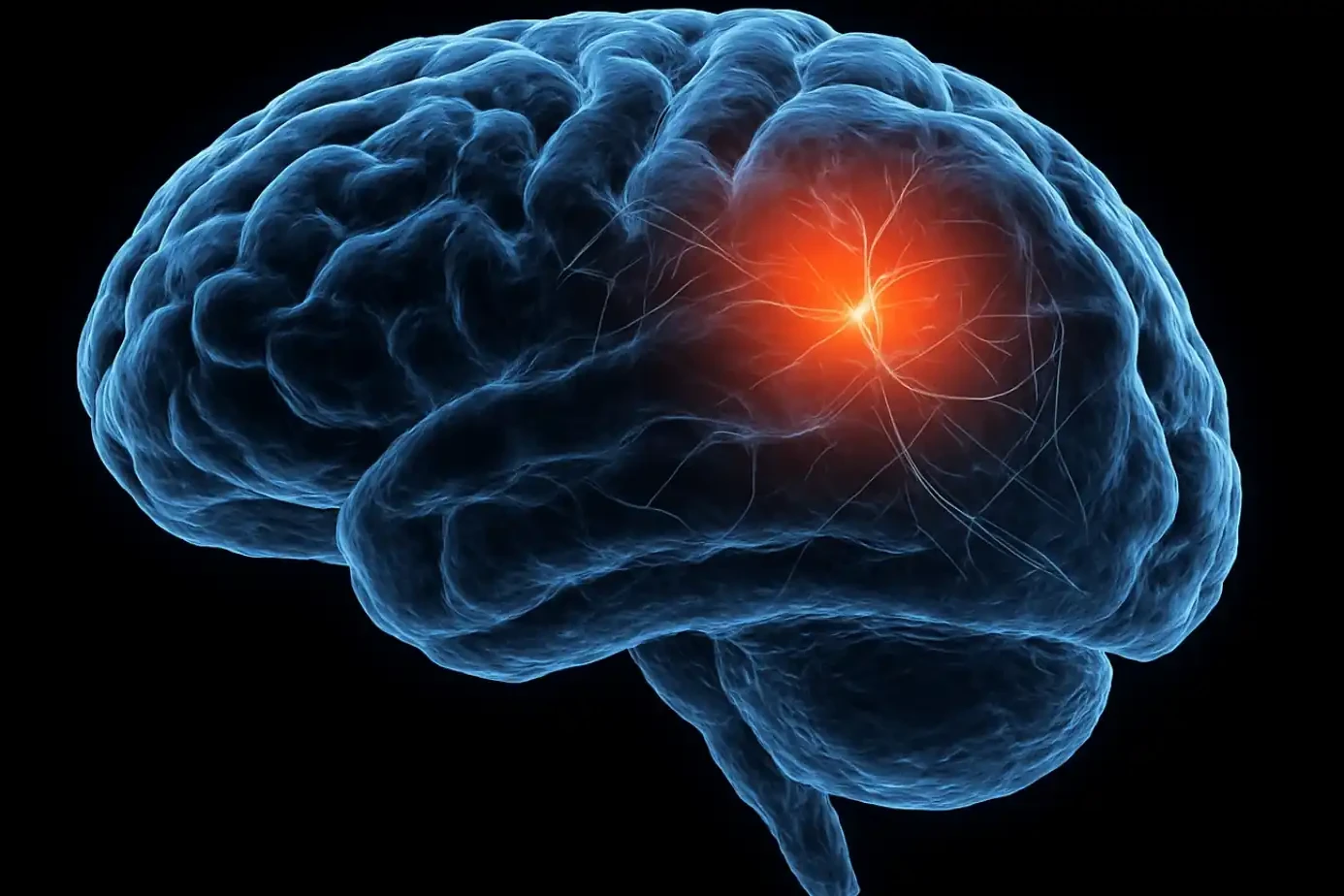Hello, India! Today, I want to talk to you about an important topic that affects many people: brain cancer. Brain tumors, both benign and malignant, can have a significant impact on a person’s life. That’s why it’s crucial to have a clear understanding of the different types of brain cancer and how they can affect you or your loved ones.
A brain tumor is an abnormal mass of tissue in the brain or its immediate surroundings. There are more than 150 different types of brain tumors, but they can be categorized into two main groups: primary and metastatic. Primary brain tumors originate from the tissues of the brain or its immediate surroundings, while metastatic brain tumors arise from cancer cells that spread to the brain from other parts of the body.
Advances in diagnostic tools, surgery, and radiation treatment have improved survival rates and quality of life for patients with brain tumors. However, it is essential to understand the specific type of brain cancer you or your loved one may be facing to ensure the most effective treatment approach.
In the upcoming sections, I will provide you with detailed information about the different types of brain tumors, including benign and malignant tumors, as well as other less common types. I will also explain the World Health Organization’s grading system for brain tumors, discuss brain cancer incidence in adults, explore common causes of brain tumors, and highlight the symptoms to watch out for.
By the end of this article, you will have a comprehensive understanding of the various types of brain cancer, empowering you to make informed decisions and seek appropriate medical care. Remember, knowledge is power when it comes to your health.
 Types of Benign Brain Tumors
Types of Benign Brain Tumors
Benign brain tumors are slow-growing tumors that are unlikely to spread to other parts of the brain or body. These tumors are non-cancerous and generally have a better prognosis compared to malignant brain tumors. Here are some common types of benign brain tumors:
1. Chordomas
Chordomas are rare tumors that develop from remnants of the notochord, a structure present during fetal development. These tumors usually occur in the skull base or spine and can cause symptoms such as headaches, neck pain, and facial numbness.
2. Craniopharyngiomas
Craniopharyngiomas are tumors that form near the pituitary gland, which is located at the base of the brain. These tumors can cause hormone imbalances and vision problems due to their location near critical structures.
3. Gangliocytomas
Gangliocytomas are rare, slow-growing tumors that typically occur in the lower part of the brain called the cerebellum. These tumors are composed of mature ganglion cells and can cause symptoms such as difficulty with coordination and balance.
4. Glomus Jugulare Tumors
Glomus jugulare tumors are rare tumors that arise from the glomus cells in the jugular bulb, which is located at the base of the skull. These tumors can cause hearing loss, facial paralysis, and dizziness due to their proximity to the cranial nerves.
5. Meningiomas
Meningiomas are typically slow-growing tumors that develop from the meninges, the protective membranes that surround the brain and spinal cord. These tumors can cause a variety of symptoms depending on their size and location, such as headaches, seizures, and changes in sensation.
6. Pineocytomas
Pineocytomas are rare tumors that arise from the pineal gland, a small structure in the brain that produces melatonin. These tumors can cause symptoms such as sleep disturbances, vision problems, and hormonal imbalances.
7. Pituitary Adenomas
Pituitary adenomas are tumors that develop in the pituitary gland, which plays a crucial role in regulating hormone production. These tumors can cause hormonal imbalances and vision problems due to their location near the optic nerves.
8. Schwannomas
Schwannomas are tumors that arise from the Schwann cells, which wrap around and insulate nerve fibers. These tumors can occur in various parts of the brain and can cause symptoms such as hearing loss, facial numbness, and difficulty with balance.
These are just a few examples of benign brain tumors. It is important to consult with a healthcare professional for an accurate diagnosis and appropriate treatment plan.
Types of Malignant Brain Tumors
Malignant brain tumors are cancerous tumors that have the potential to spread to other parts of the brain or spinal cord. These tumors can be aggressive and may require immediate medical attention. Here are some common types of malignant brain tumors:
- Gliomas: Gliomas are the most common type of malignant brain tumors. They originate from the glial cells in the brain and can be further classified into subtypes such as astrocytomas, ependymomas, and oligodendrogliomas.
- Glioblastoma Multiforme: Glioblastoma multiforme is a highly aggressive malignant brain tumor that typically occurs in adults. It is characterized by rapid growth and invasion of surrounding brain tissue.
- Medulloblastomas: Medulloblastomas are malignant brain tumors that primarily affect children and adolescents. These tumors typically develop in the cerebellum, a region responsible for balance and coordination.
These malignant brain tumors require specialized treatment approaches that may involve a combination of surgery, radiation therapy, and chemotherapy. The specific treatment plan will depend on factors such as the tumor’s location, size, and grade, as well as the patient’s overall health.
Other Types of Brain Tumors
While hemangioblastomas, rhabdoid tumors, and pediatric brain tumors may be less common than other types of brain tumors, they are still significant and require attention. Let’s explore each of these in detail:
Hemangioblastomas
Hemangioblastomas are rare, slow-growing tumors that usually occur in the cerebellum, the lower back of the brain. These tumors are composed of blood vessels and tend to affect adults more than children. Hemangioblastomas can cause symptoms such as headache, coordination problems, and vision changes.
Rhabdoid Tumors
Rhabdoid tumors are highly aggressive and typically occur in children under the age of 3. They can develop in various parts of the central nervous system, including the brain. Rhabdoid tumors are characterized by the loss of a specific tumor-suppressor gene, resulting in fast-growing tumors that are challenging to treat. Common symptoms include vomiting, headaches, and developmental delays.
Pediatric Brain Tumors
Brain tumors are the most common form of solid tumors in children. They can occur in different parts of the brain and vary in their severity and treatment options. Some common types of pediatric brain tumors include medulloblastomas, ependymomas, and gliomas. Early diagnosis and appropriate treatment are crucial for maximizing the chances of successful outcomes in pediatric brain tumor cases.

World Health Organization Brain Tumor Grades
The World Health Organization (WHO) has developed a grading system to classify brain tumors based on their malignancy or benignity. The grades range from I to IV, with higher grades indicative of more aggressive tumors.
Here is a breakdown of the various WHO brain tumor grades:
| Grade | Description |
|---|---|
| Grade I | WHO grade I brain tumors are generally considered benign and have a low potential to spread or recur. These tumors are usually slow-growing and have well-defined borders. |
| Grade II | WHO grade II brain tumors are classified as low-grade tumors. While they are generally slow-growing, they have a higher potential to infiltrate nearby tissues and may recur over time. |
| Grade III | WHO grade III brain tumors are considered malignant. They are more aggressive compared to grade II tumors and have a greater likelihood of spreading to adjacent brain tissues and recurring after treatment. |
| Grade IV | WHO grade IV brain tumors are the most aggressive and malignant. They are fast-growing and invasive, often infiltrating surrounding tissues. Grade IV tumors are associated with a poor prognosis and require immediate and intensive treatment. |
It is important to note that the WHO grading system provides valuable information for healthcare professionals in determining the appropriate treatment approach and predicting the potential for tumor recurrence.
Brain Cancer Incidence in Adults
Understanding the incidence of brain cancer in adults is crucial for cancer research and public health strategies. According to the National Cancer Institute, in 2022 alone, an estimated 22,910 adults were diagnosed with brain and other nervous system tumors. This includes 12,630 men and 10,280 women. Unfortunately, approximately 13,700 of these diagnoses are expected to result in death.
When it comes to brain cancer, age is a significant factor. The median age at diagnosis of brain and nervous system cancer between 2005 and 2009 was 64 years old. This data highlights the importance of early detection and regular health check-ups, especially for individuals in the higher-risk age group.

Understanding the incidence of brain cancer in adults is vital for promoting awareness, identifying risk factors, and developing effective prevention and treatment strategies. The National Cancer Institute and other research institutions continuously work towards advancing our understanding of brain tumor development and improving patient outcomes.
Brain Tumor Causes
The exact causes of brain tumors are not fully understood. However, certain factors can increase the risk of developing a brain tumor:
- Genetic conditions: Some genetic conditions, such as neurofibromatosis, von Hippel-Lindau disease, and Li-Fraumeni syndrome, are associated with an increased risk of brain tumors.
- High doses of radiation: Previous exposure to high doses of radiation, such as radiation therapy for other cancers or radiation exposure from nuclear accidents, may increase the risk of developing a brain tumor.
- Environmental factors: Prolonged exposure to certain environmental pollutants and chemicals may also play a role in the development of brain tumors, although more research is needed to fully understand these associations.
- Prior history of brain tumors: Individuals who have previously had a brain tumor are at an increased risk of developing another one in the future.
It is important to note that while these factors may increase the risk of developing a brain tumor, not everyone who is exposed to these risk factors will develop the condition. The development of a brain tumor is likely influenced by a combination of genetic, environmental, and lifestyle factors.

Brain Tumor Symptoms
Recognizing the symptoms of a brain tumor is crucial for early detection and proper medical intervention. The signs and symptoms can vary depending on the size, location, and grade of the tumor. Common symptoms include:
- Headaches: Persistent or severe headaches that are not relieved by over-the-counter pain medications.
- Seizures: Unexplained seizures or convulsions, which may involve loss of consciousness or involuntary movements.
- Weakness: Sudden weakness or numbness, typically affecting one side of the body or a specific limb.
- Balance Problems: Difficulty with coordination and balance, leading to unsteady movements or stumbling.
If you experience any of these symptoms or have concerns about your health, it is important to consult a healthcare professional for a proper evaluation and diagnosis.
Conclusion
Brain cancer is a complex disease with various types and grades. When it comes to treating brain tumors, there are several options available depending on factors such as tumor type, size, location, and the patient’s overall health. Treatment modalities for brain cancer may include surgery, radiation therapy, chemotherapy, or a combination of these approaches.
The prognosis for brain cancer is influenced by multiple factors, including the specific type and stage of the tumor, the individual’s response to treatment, and their age and general health. It is important to work closely with a healthcare team to determine the most suitable treatment plan and support for each individual case.
In addition to medical interventions, palliative care plays a crucial role in managing symptoms and improving the quality of life for patients with brain cancer. Palliative care focuses on providing comprehensive support, addressing physical, emotional, and psychological needs, and ensuring comfort throughout the treatment journey.
If you or a loved one is facing a brain cancer diagnosis, remember that you are not alone. Reach out to healthcare professionals who can guide you through the available treatment options, discuss prognosis in detail, and help you access the palliative care and support services that can enhance your overall well-being and provide you with the best possible quality of life.
FAQ
What are the types of brain cancer?
The types of brain cancer include primary brain tumors and metastatic brain tumors. Primary brain tumors originate from the brain or its surrounding tissues, while metastatic brain tumors spread to the brain from other parts of the body.
What are the types of benign brain tumors?
Some common types of benign brain tumors include Chordomas, Craniopharyngiomas, Gangliocytomas, Glomus jugulare tumors, Meningiomas, Pineocytomas, Pituitary adenomas, and Schwannomas.
What are the types of malignant brain tumors?
Malignant brain tumors include gliomas, astrocytomas, ependymomas, glioblastoma multiforme, medulloblastomas, and oligodendrogliomas.
Are there any other types of brain tumors?
Yes, there are other types of brain tumors that are less common but still significant, such as hemangioblastomas, rhabdoid tumors, and pediatric brain tumors.
How does the World Health Organization classify brain tumors?
The World Health Organization (WHO) has developed a grading system to classify brain tumors based on their malignancy or benignity. The grades range from I to IV, with higher grades indicating more aggressive tumors.
What is the incidence of brain cancer in adults?
In 2022, an estimated 22,910 adults (12,630 men and 10,280 women) were diagnosed with brain and other nervous system tumors. Approximately 13,700 of these diagnoses are expected to result in death. The median age of death from brain and nervous system cancer is 64 years old.
What are the causes of brain tumors?
The exact causes of brain tumors are not fully understood, but certain factors can increase the risk of developing a brain tumor. These factors include genetic conditions and high doses of radiation.
What are the symptoms of brain tumors?
The signs and symptoms of brain tumors can vary depending on factors such as the tumor’s size, location, and grade. Common symptoms include headaches, seizures, weakness, and balance problems.
What are the treatment options for brain cancer?
The treatment options for brain tumors depend on factors such as tumor type, size, location, and the patient’s overall health. Treatments may include surgery, radiation therapy, chemotherapy, or a combination of these modalities.
Source Links
About The Author

This article is medically reviewed by Dr. Chandril Chugh, Board-Certified Neurologist, providing expert insights and reliable health information.
Dr. Chandril Chugh is a U.S.-trained neurologist with over a decade of experience. Known for his compassionate care, he specializes in treating neurological conditions such as migraines, epilepsy, and Parkinson’s disease. Dr. Chugh is highly regarded for his patient-centered approach and dedication to providing personalized care.
→ Book a consultation to discover which remedies suit your needs best.

 Types of Benign Brain Tumors
Types of Benign Brain Tumors


